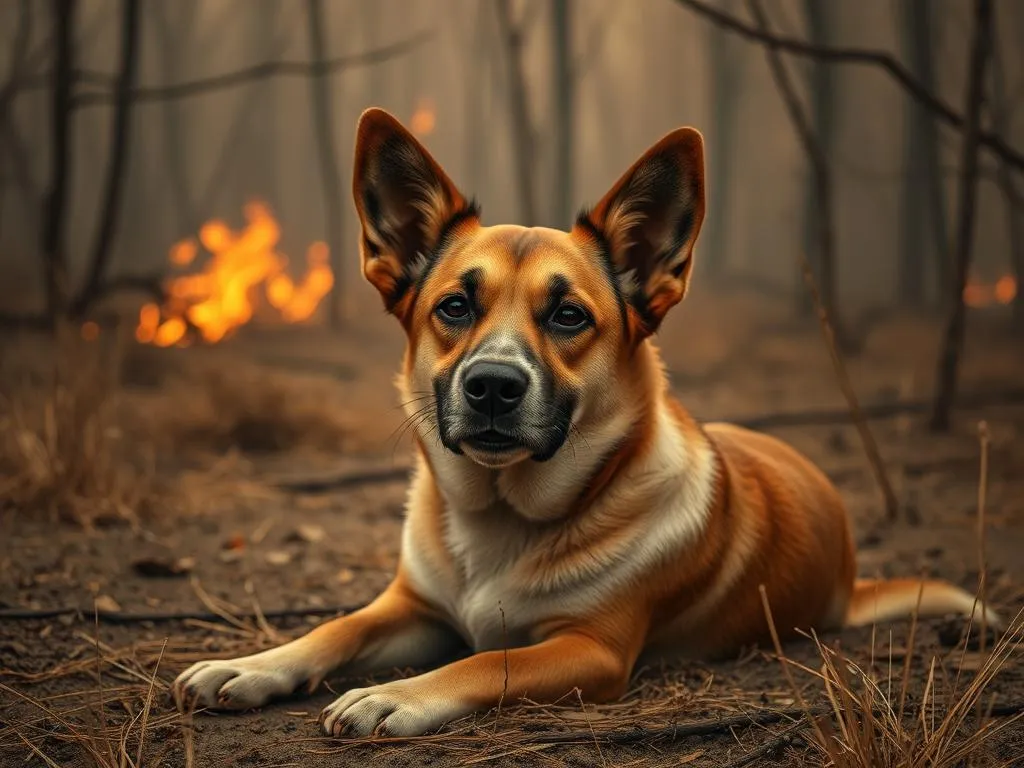
Introduction
Wildfires can strike suddenly and with devastating consequences, not just for us humans but for our beloved pets as well. As dog owners, it’s our responsibility to ensure that our furry friends are safe and healthy during such catastrophic events. Protecting dogs from wildfire smoke is crucial, as the dangers posed by smoke inhalation can lead to severe respiratory issues and long-term health effects. In this article, we will explore the composition of wildfire smoke, the health risks it poses to dogs, and practical steps you can take to safeguard your canine companions during wildfire events.
Understanding Wildfire Smoke
What is Wildfire Smoke?
Wildfire smoke is a complex mixture of gases and fine particulate matter that can travel long distances. Its composition includes a variety of harmful substances such as carbon monoxide, volatile organic compounds (VOCs), and particulate matter (PM) that can penetrate deep into the lungs. The smoke can drastically reduce air quality, posing significant health risks not only to humans but also to animals.
Health Risks of Wildfire Smoke for Dogs
The health risks of wildfire smoke for dogs are alarming. In the short term, dogs exposed to smoke may experience:
- Coughing
- Difficulty breathing
- Nasal discharge
However, the long-term effects can be even more severe, including chronic respiratory issues and an increased risk of cancer. Certain dogs are especially vulnerable, such as senior dogs and those with pre-existing health conditions like asthma or allergies. Understanding these risks is the first step toward protecting your dog from the harmful effects of wildfire smoke.
Preparing for Wildfires
Creating a Pet Emergency Kit
Being prepared is key to ensuring your dog’s safety during a wildfire. One essential step is to create a pet emergency kit. Here are the critical supplies you should include:
- Food: Enough for at least a week, preferably in airtight containers.
- Water: A sufficient supply for both you and your dog.
- Medications: Any prescriptions or supplements your dog requires.
- First-aid supplies: Bandages, antiseptics, and other basic medical needs.
- Identification: Ensure your dog has up-to-date tags and consider microchipping for added safety.
Establishing an Evacuation Plan
Having a well-thought-out evacuation plan can save lives. Know when to evacuate with your dog—ideally before conditions become dangerous. Identify safe locations to go, such as pet-friendly shelters or hotels that allow dogs. It’s also essential to have a plan for travel with your dog, ensuring that you have a secure crate or harness for car rides.
Protecting Dogs During Wildfire Events
Keeping Dogs Indoors
When wildfire smoke descends upon your area, the best place for your dog is indoors. Keeping dogs indoors during smoke events minimizes their exposure to harmful particles. To create a safe and comfortable indoor environment, consider the following:
- Air filtration options: Use HEPA filters or air purifiers to reduce indoor air pollution.
- Keeping windows and doors closed: This helps prevent smoke from seeping inside.
Monitoring Air Quality
It’s vital to keep an eye on air quality levels during wildfire events. The Air Quality Index (AQI) is a useful tool that indicates how polluted the air is. When the AQI indicates unhealthy air quality, it’s best to keep your dog indoors. Understanding when it’s safe for dogs to go outside is crucial for their well-being.
Managing Outdoor Activities
If you must take your dog outside, choose times when the air quality is at its best. Here are some best practices for walking dogs during smoky conditions:
- Limit the duration of walks: Shorter outings can reduce exposure to smoke.
- Choose shaded areas: If possible, walk in shaded or cooler areas away from smoke.
- Explore alternatives: Consider indoor activities such as games, training exercises, or puzzle toys to keep your dog mentally stimulated.
Health Care Considerations
Recognizing Symptoms of Smoke Inhalation
Being vigilant about your dog’s health during wildfire smoke exposure is crucial. Common signs of smoke inhalation include:
- Persistent coughing
- Difficulty breathing
- Lethargy or reduced activity levels
If you notice any of these symptoms, it’s essential to seek veterinary care immediately. Early intervention can make a significant difference in your dog’s recovery.
Veterinary Advice
Consulting with a veterinarian is vital during wildfire events. They can provide tailored advice based on your dog’s health history and current condition. Possible treatments for smoke-related health issues may include:
- Bronchodilators: To help open airways and ease breathing.
- Anti-inflammatories: To reduce inflammation in the lungs.
- Supportive care: Such as oxygen therapy in severe cases.
Post-Wildfire Care
Reintroducing Outdoor Activities
Once the smoke clears and it’s deemed safe, slowly reintroducing outdoor activities for your dog is essential. Begin with short walks and gradually increase the duration as your dog adjusts to the outdoor environment again. Monitor their reaction closely to ensure they are comfortable and healthy.
Long-term Health Monitoring
Even after the immediate threat has passed, it’s essential to keep an eye on your dog’s respiratory health. Regular veterinary check-ups and screenings can help catch any long-term effects of smoke exposure early. Discuss any concerns with your veterinarian and consider additional precautions if your dog has pre-existing health conditions.
Conclusion
In summary, protecting dogs from wildfire smoke is a multi-faceted approach that requires preparation, vigilance, and action. By understanding the dangers of smoke, creating emergency kits, establishing evacuation plans, and monitoring air quality, dog owners can significantly reduce the risk to their pets. Additionally, being attentive to your dog’s health during and after wildfire events is crucial for their long-term well-being. Remember, proactive measures can make all the difference in keeping our canine companions safe during these challenging times.








